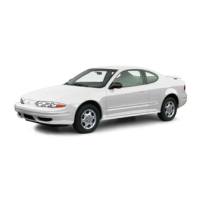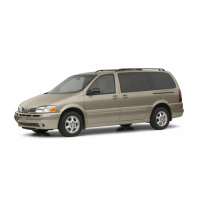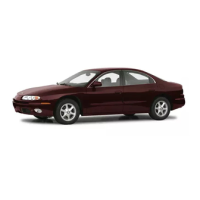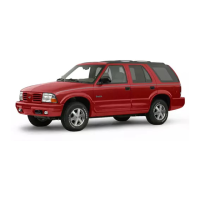life, riding
comfort
and handling stability
for normal driving conditions. When
inflated
at
the
highest pressures shown
on
the placard,
the
tires have
the
load carrying
capacity
to
operate satisfactorily
at
all
loads up
to
and including
the
vehicle
capacity
load (total pounds) which also
is
shown on
the
placard.
In
addition, for
those owners
who
prefer
the
utmost
in
comfort,
the
reduced tire pressures listed
on
the
placard may be used when loads
of
5 occupants or less are carried.
The
use of improper tire inflation pressures
can
adversely affect tire life and vehicle
performa nce:
•
Too
little air pressure can result in
excessive
tire. heat, abnormal tire wear,
adverse vehicle
handling and reduced
fuel economy.
•
Too
much air pressure can result
in
abnormal tire wear, adverse vehicle ride
and
handling,
and
increased
susceptibility
to
damage by road
impacts.
Tire pressures should
be checked when
the
tires are
"cold"
at
least once a
month
(and
preferably oftener) or before
long
trips
or
when heavily loaded.
The
following points
should be observed when checking and
setting tire pressures:
1.
Cold tire pressure ratings are applicable
when a vehicle has been inoperative
for
3 hours or more, or driven less
than
1
mile.
2. Tire inflation pressure may increase as
much
as
6
pounds
per square inch (psi)
when
hot
(after vehicle has been driven
10
miles
or
at speeds
of
more
than
60
miles per hour). Do
not
"bleed"
or
reduce pressures when tires are
hot
from driving.
3. For
continuous
high speed operation
(over
75 mph), increase tire inflation
pressure 4 psi above
the
recommended
pressures up
to
a maximum of
32
psi
cold pressure for load range B tires.
Sustained speeds above
75 mph are
not
recommended
when
the
4 psi
adjustment
would require pressures
greater
than
the
above maximum
pressure.
4.
Always use a tire pressure gauge when
checking pressures as
the
appearance
of
a tire can be deceiving. For example,
radial ply
tires,
in
comparison with bias
ply tires
at
the
same pressure, may have
the
appearance of being under-inflated.
VEHICLE
LOADING-Do
not
load
your
vehicle beyond
the
vehicle capacity (total
pounds) shown on the tire placard. This
figure represents
the
design capacity of
the
vehicle,
not
merely of
the
tires. When
towing
trailers,
the
allowable passenger and
cargo
load must be reduced by
an
amount
equal
to
the
trailer tongue load
on
the
·
trailer hitch and the weight of
the
hitch.
(See ''Trailer Hauling"
in
Section 1 of this
manual.)
Station
wagon loads should be
distributed as far forward as possible.
Vehicles equipped with
luggage racks
do
not
have a vehicle load capacity greater
than
specified on
the
tire placard.
69

